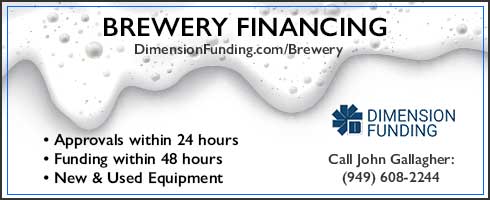While seemingly innocuous, the combination of marijuana and Ecstasy has the potential to be very dangerous and should be avoided at all costs. Understanding the side effects and dangers of taking these drugs independently and together can empower people to make informed decisions. Cannabis use can look very different from person to person depending on aspects like frequency, reasons for use, social contexts (whether you’re using alone or with others) and quantity. In our recent study, we found that certain characteristics tend to be linked to cannabis use problems. The adverse health effects of alcohol are well-documented; excessive drinking can lead to liver damage or failure, heart strain or damage and various other issues, including a heightened risk of cancer. In the best-case scenarios, this combination may produce an undesirable experience for the user.
MDMA vs. Weed
The concept of combining different substances to feel the effects of both isn’t a new one. For years, movies and shows have depicted characters using multiple substances. For example, you may have seen characters mix alcohol with various drugs or start smoking pot while already experiencing molly effects from ecstasy. Ultimately, using multiple drugs at once (known as polysubstance use) is fairly common — however, that doesn’t make it safe. There are many forms of synergistic experience poly-drug use among the study participants.
Links to NCBI Databases
Taking MDMA leads to an acute massive neuronal release of serotonin (5-HT),followed by a period of depletion before levels return to normal. More chronictoxic effects appear also to involve primarily the 5-HT system, with the demonstrationof serotonergic degeneration in several animal species, including non-humanprimates (3). 5- HT is thought to playa prominent role in memory function and marked toxic effects of MDMA havebeen observed in the hippocampus and frontal cortex – areas crucial to memoryand other cognitive functions (4).
MDMA and weed: a wicked combo or a dangerous mix?
- Balanced levels of these chemicals enhance our mood, while an imbalance can lead to mood disorders like depression.
- People who are used to taking marijuana will typically experience less intense effects than those new to the drug.
- Both sidesof the brain were implicated and the patterned deficit profile excluded explanationsbased on non-specific factors such as subjects’ motivation.
- For example, you may have seen characters mix alcohol with various drugs or start smoking pot while already experiencing molly effects from ecstasy.
Another barrier to understanding possible drug interactions is that MDMA works on multiple systems in the body – increasing the chances for additive, synergistic and/or antagonistic interactions when combined with other substances. Now in the new millennium there have been a plethora of studies on thecognitive effects of chronic MDMA use. Before reviewing these, the cognitiveeffects of cannabis will be considered. Cannabis is a popular drug of choicein the rave subculture and is also taken by MDMA users to ameliorate the lowmood and irritability of the ‘coming down’ period after MDMA use. Marijuana ecstasy and weed is one of the most widely misused drugs in the US, especially now that recreational use of the drug is legal in several states and the District of Columbia.
One young female said that marijuana would ruin the peak of ecstasy but helps when coming down; therefore she used marijuana after the ecstasy peak. A 19-year old male talked about his reasons for combining ecstasy and marijuana. She began preferring alcohol and marijuana for those days that she could not “afford” an ecstasy high and coming down. She noted that her “hard drug use was carefully planned so that it would not interfere with her responsibilities. Later in the interview, however, she also hinted at the fact that she might be cutting down on her ecstasy use and shifting to alcohol and marijuana because that is what her current boyfriend uses.
Treatment
For many who use marijuana recreationally and choose to blend it with other substances, Ecstasy, also referred to as MDMA or molly, is a popular choice. This is particularly true for those who like to use drugs while at parties, clubs or raves. Minority stressors have been linked to cannabis use among sexually diverse youth. We found that more general sources of stress — like not feeling in control of one’s life or being overwhelmed by unexpected events — were key in predicting riskier use.
- Recognizing the role of stress in cannabis use disparities among sexually diverse youth is not new.
- If one of our articles is marked with a ‘reviewed for accuracy and expertise’ badge, it indicates that one or more members of our team of doctors and clinicians have reviewed the article further to ensure accuracy.
- MDMA’s effects on serotonin and dopamine create strong associations between drug use and social bonding.
- Some report that cannabis amplifies MDMA’s effects, while others use it to ease the comedown.
- It’s essential we don’t lose sight of the uneven terrain young people are navigating — especially those already facing elevated stress due to social marginalization.
- Using cannabis and MDMA together introduces complex neuroadaptive changes beyond the effects of either drug alone.
Ecstasy & Alcohol
Some studies suggest cannabis use before MDMA blunts serotonin depletion, while others indicate chronic cannabis exposure worsens MDMA-induced serotonergic downregulation. These findings highlight the complexity of their interaction, where cannabinoid composition, frequency of use, and baseline neurochemical state shape the long-term consequences. Using cannabis and MDMA together introduces complex neuroadaptive changes beyond the effects of either drug alone.
CBD, in contrast, acts as a negative allosteric modulator of CB1 and influences other receptors, such as serotonin 5-HT1A and transient receptor potential vanilloid 1 (TRPV1), contributing to its anxiolytic and anti-inflammatory properties. When asked about their favorite drug to use with ecstasy almost one in ten (9.6%) study participants preferred no other drug to use as part of the ecstasy high. In contrast, the majority indicated a preference for using another drug with ecstasy. Almost one-half of the study participants (45.7%) preferred using marijuana while taking ecstasy, followed by methamphetamine (10.6%), and alcohol (9.6%) next.
Like cannabis, MDMA is a Schedule I controlled substance at the federal level in the United States. Notably, there has never been a fatal overdose of cannabis, and the plant continues to gain legal traction worldwide. MDMA, on the other hand, is illegal and not currently accepted as a medical treatment in the U.S.
In addition, the qualitative data provided insight into the reasons for the synergistic use and the users’ perceptions of its advantages. Also common among more than one-half of the ecstasy users in this sample was the use of prescription drugs. We especially note that even though ecstasy and SSRIs tend to have a similar impact on the brain, some users experienced that their prescription anti-depressants were preventing them from experiencing an ecstasy high. Unfortunately, they would give up their prescription medications in order to get high on ecstasy as opposed to taking the opposite choice of giving up ecstasy.
As with marijuana, it’s possible to develop physical and psychological dependency on molly. Those who become addicted may experience withdrawal symptoms such as depression or fatigue if they try to stop using the substance. If you or a loved one are missing marijuana and ecstasy and need help, we are here for you.
The sample size of 36 was relatively large for the fieldand MDMA use was greater than in most preceding studies (estimated mean 235tablets). Subjects were identified for whom MDMA was the primary drug andwho reported using other drugs only irregularly. They had not consumed anyillicit drug for a mean of 78 days prior to the testing. Thus, impairmentswere unlikely to represent either acute MDMA effects, which last approximately3-5 hours after a dose (12), or lingeringeffects which may last several days and may reflect the time course of regenerationof 5-HT. Soon after taking Ecstasy, an individual experiences an increased risk of dehydration, hyperthermia and electrolyte imbalance, which can be dangerous.
“There are different boxes of substances, stimulants, sedatives, hallucinogens, dissociatives. Combining more than one from each of those boxes can increase your risk,” says Dr. Owen Bowden-Jones, founder of the CNWL Drug Club Clinic. Cannabis has many potential therapeutic benefits and can be used legally with a valid medical marijuana card.
Researchers hope that fewer restrictions will allow them to bring science on marijuana up to speed with the way people are actually using it. Also, NIDA’s marijuana is low in THC and often low-quality, making it ineffective for studying what’s actually on the market. There’s a lot we still don’t know about weed, though, because of restrictions on studying it. It can also help with anxiety, insomnia, pain, and muscle spasms, though CBD is more effective for some of those issues. Ancient Chinese and South Asian people used cannabis as medicine for thousands of years. When you consume cannabis by smoking, vaping, dabbing or eating “edibles,” THC enters your bloodstream.
Performance on other cognitivetests, including executive function and working memory, was unimpaired. Both are often used in social settings such as parties and clubs, so it makes sense that they’d be taken together. In some cases, individuals intentionally take them together to balance out the negative effects of coming down from Ecstasy or to increase the sense of euphoria both drugs can provide. Notwithstanding these findings, MDMA has continued to be implicated incontemporaneous research, and further work in our department with electrophysiologicalmeasures highlighted residual effects that were independent of cannabis.
THC, the colloquial term for tetrahydrocannabinol and one of the primary cannabinoids in marijuana, enters the bloodstream after consumption, either through the lungs or the stomach. Unlike THC, CBD doesn’t cause a high, but it interacts with the body’s neuroreceptors. It acts as a pain reliever and can help to regulate the user’s mood, alleviate stress and anxiety and help them sleep. For sexually diverse youth, this means not only having more stress to cope with, but also fewer adequate, safe mental health resources. Indeed, sexually diverse youth face many barriers when it comes to accessing mental health services. MDMA is classified as a Schedule I controlled substance in the United States, meaning that it is considered to have a high potential for abuse and no accepted medical use.
All it does is just keeps you up and have energy so you want to move—you want to be more active. I mean, any kind of roll in general I’ll still want to get up, walk around, talk to people. But it’s hard a lot of times without any type of other amphetamine to get myself to dance while I’m rolling. Just ‘cause, you know, you’re just so—my body feels kind of heavy, but my mind’s racing. The qualitative data analysis was guided by a modified grounded theory approach (Charmaz, 2001; Glaser & Strauss, 1967; Sterk et al., 2000; Strauss & Corbin, 1998). The in-depth interviews were transcribed and the text was imported into a qualitative data management program.



